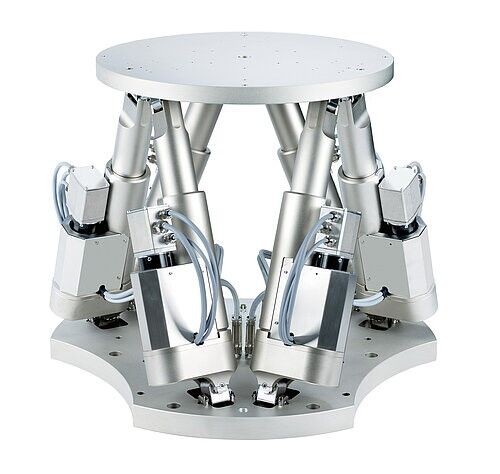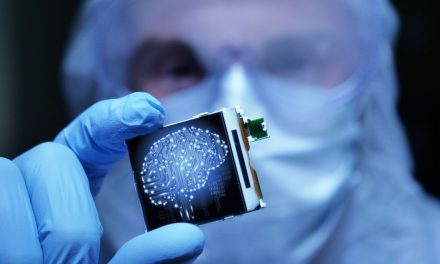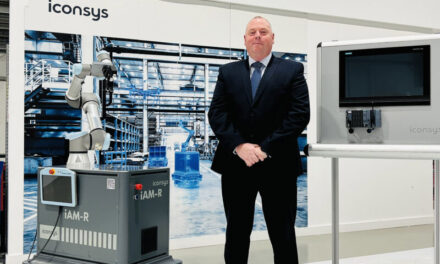Hexapods are excellent tools for accurate positioning, and gyroscopes have long been used for motion detection, but what happens when you combine both technologies? Available in different sizes, hexapods have countless applications, from testing of stabilisation algorithms in cameras, to precise positioning of optical fibres, for verification of silicon photonics devices. Gyroscopes, on the other hand, can be used for accurate measurement of angles in theodolites, provide altitude control in airplanes, or be used in gyrocompasses for navigation at sea and even out in space. The accuracy of hexapods and the sensitivity of gyroscopes opens up a realm of opportunities for users working on tasks that require a steady workspace in an unstable location.
Connecting these two tools makes it possible for the gyroscope to detect the disturbance and send the information to the hexapod’s controller. The hexapod then delivers accurate and flexible positioning in six degrees of freedom, provided by six individual struts acting on a single motion platform. The system moves in a way that compensates for the perturbation, maintaining a horizontal top plate all times and works well with jaw, pitch and roll.
The power of this set-up can be clearly seen in a model tested by Physik Instrumente (PI) using two of the company’s hexapods – one small, a follower, and one large, a master (H-811/C-887 and H-840/C-840) – and a gyroscope from VectorNav (VN-300). The evaluation first looked at the rate at which the gyroscope could send information to the hexapod. Once good communication between the two had been verified, the next step was to see if the small follower hexapod could mimic the movement of the larger master, as directed by the gyroscope. Finally, the complete set-up was tested, with the small follower and gyroscope paired, and mounted on the large master, allowing the top hexapod to cancel out the movements of the lower one. The results were extremely positive, showing that the system could successfully handle complicated movements and account for disturbances with frequencies up to 50 Hz.
Combining these two technologies in this way is extremely powerful, taking advantage of the agile motion control of hexapods as well as the gyroscopes ability to accurately quantify perturbations. Together, they create a system that provides an almost instantaneous and extremely precise response to disturbances, working in harmony to give the ultimate stable workspace.
To learn more, visit https://www.physikinstrumente.co.uk/en/knowledge-center/blog/gyroscopic-stabilization-of-a-hexapod/?utm_medium=foc&utm_source=pn&utm_campaign=PIUK-Hexapod&utm_content=KDM
PI in brief
PI (Physik Instrumente), headquartered in Karlsruhe, is the market and technology leader for high precision positioning technology and piezo applications in the semiconductor industry, life sciences, photonics, and in industrial automation. In close cooperation with customers from all over the world and for 50 years now, PI’s specialists (approx. 1,300) have, again and again, been pushing the boundaries of what is technically possible and developing customised solutions from scratch. More than 350 granted and pending patents underline the company’s claim to its leadership. PI has six production sites and 15 sales and service offices in Europe, North America, and Asia.




